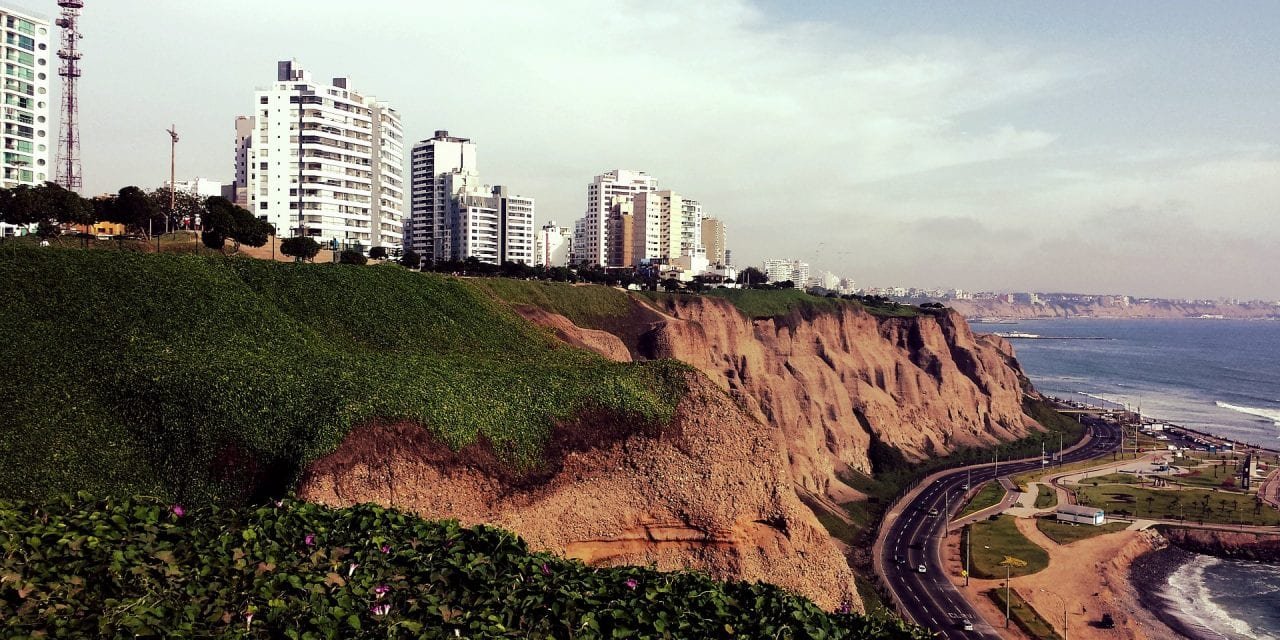By Hannah Vickers
While Cuzco is the more popular city to explore Peru’s ancient past, the noisier, dirtier and more modern capital of the country has quite a few hidden gems. Lima’s large number of historical sacred ruins are known locally as ‘huacas’ and are strewn around the city.
As the sprawling capital has grown up around these hulking reminders of its past over the years, it’s had to grow around these ancient monuments. Most of the huacas aren’t particularly preserved, apart from a fence to keep out visitors, but Huaca Pucllana, in the heart of the wealthy Miraflores district, is open to visitors.
Strolling around Miraflores, taking in the wide streets and modern architecture, you could be forgiven for looking a bit confused when you come across the pre-Inca adobe and clay pyramid smack bang in the middle one of the city’s most modernised areas.
The impressive, but slightly sinister looking temple is made up of seven staggered platforms, rather like the Andean terraces you’ll see elsewhere in the country. The view of the cityscape rising up behind the squat, crumbling, adobe structure makes for disconcerting, but spectacular viewing.
The site is still being excavated and artifacts are constantly being uncovered, as well as the odd mummy. So far, there have been three adults discovered in a tomb, as well as the remains of a child who was sacrificed.
While most of Lima’s huacas are somewhat neglected, the Huaca Pucllana has been a historical and cultural park since 1991 and is still being investigated by historians and archaeologists who use the site to learn more about Peru’s pre-Hispanic cultures. It’s been of huge interest to travellers since the 19th century and is thought to have been built during the Lima Culture, which existed in the area from 200 AD to 700 AD.
The temple has two distinct areas: the administrative sector and urban area, which are believed to have been used for public meetings and decision making forums, and the ceremonial section, which contains the impressive 500 metre long adobe pyramid and where priests conducted ceremonies honouring the gods and ancestors.
Archaeologists have been hard at work in the area for some time and have uncovered textiles, ceramics, bones, stone tools and remains of animals and food, including alpacas, the popular guinea pig, ducks, fish, corn, pumpkins, beans, and exotic Peruvian fruits. All these findings help us to get closer to the original ‘Limeños’ in the area.
You can visit Wednesday to Monday from 9 a.m. to 5 p.m. and there’s even an on-site restaurant providing haute cuisine made by an internationally trained chef for those who want to make the visit a little more special. Entry costs $2.50 for adults, with students and children paying half. You can take a tour with an English or Spanish speaking guide, taking you through the huaca and its history. The last tour starts half an hour before the site closes but the restaurant stays open long after and the huaca is lit up beautifully at night, giving you some incredible views during your meal.
Hannah Vickers lived in Lima, Peru for a year and a half and, while there, was the editor of Peru this Week. You can read more of her work on her blog http://hanwyn.blogspot.com/ or on the Peru this Week website. She wrote this article on behalf of Aracari Travel, specialists in cultural travel all over Peru.
















